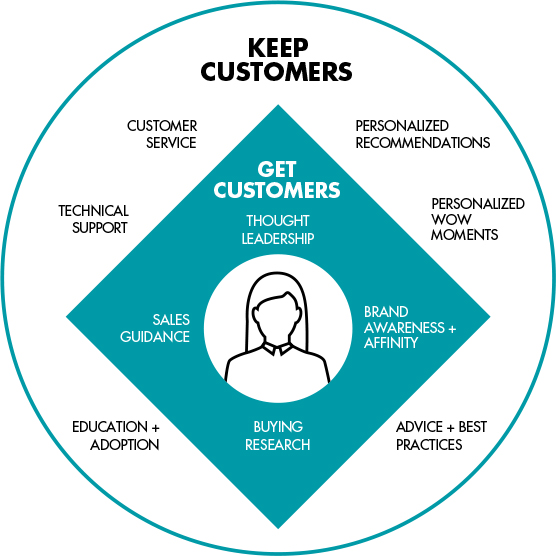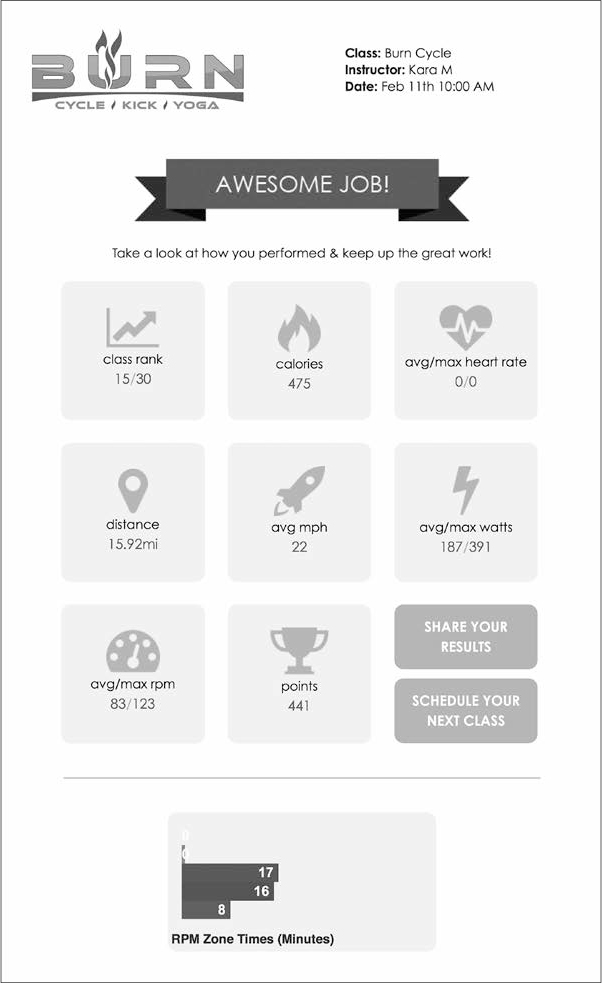2 Do Content Well or Die
The shift of business to digital has made content critical.
THE BIGGEST RISK IS NOT TAKING ANY RISK. IN A WORLD THAT’S CHANGING REALLY QUICKLY, THE ONLY STRATEGY THAT IS GUARANTEED TO FAIL IS NOT TAKING RISKS.
—Mark Zuckerberg
HOPE.
—Princess Leia Organa
With the rise of digital, I’m convinced we have entered a new business era: the content era. We’re living in a time in which content is both essential for business survival and a potential business advantage. Let’s take a closer look at why.
Digital Business Customers are Subscribers
Business has evolved from a pay-per-product model to a subscription model, or what many call the subscription economy. Credit Suisse, a financial services company, found that people spent $40.2 billion on subscriptions in 2015 alone, which is almost double what people spent on subscriptions in 2000. Jason Pressman of Shasta Ventures puts it like this:
These days, it’s almost more unusual not to do a subscription business than to do one. Startups and legacy businesses alike are experimenting with what’s possible in vertical industries that didn’t seem feasible before. Take Cadillac, which recently launched a program allowing drivers to drive multiple models for $1500 a month.1
Subscriptions give customers flexibility and affordability while they give businesses dependable revenue. And the continued digital disruption drives even more creative experimentation with subscriptions. For example, the Internet of Things trend is connecting devices or equipment to the Internet. Even a refrigerator. That means that any device or equipment can turn into a subscription. Have you heard of the spinning bike called Peloton? If not, chances are you will soon. It’s a spinning bike equipped with detailed performance analytics, and it requires a yearly subscription to online, interactive spinning classes for a wide range of levels. Customers buy the bike once and renew the subscription on a regular basis. Already successful, Peloton secured extensive funding in 2017 from investors who anticipate that Peloton will become a billion-dollar business. Noted investor Mary Meekins says that “Peloton is supporting especially broad subscriber engagement and growth. We believe Peloton is the leader in a new business that has significant potential: physical interactive media.”
Physical interactive media means a device (the bike) and a subscription to… drum roll… content.
Customers Need Content
Regardless whether you consider your customers to be subscribers, they need content throughout their relationship with your company. The need for content in a variety of touchpoints, from websites to personal assistants to print to even bikes, never stops (Figure 2.1). You must attract customers, convert them into buyers, and retain them.

Figure 2.1: Businesses need content to win over and keep subscribers.
Attract Customers
Businesses can attract customers by educating or entertaining them with content. For example, American Express Open Forum offers a wealth of articles and videos with practical advice and inspirational stories to help small businesses grow stronger. This content positions American Express as a trusted advisor early in the customer relationship.
Convert Customers
A wide range of research shows that people research most purchases—whether for personal or business situations—online (see numerous reports at ecommercefoundation.org). So businesses must provide content about their products and services to address questions, explain the features or specifications, and reiterate the benefit or value in clear and compelling ways.
Retain Customers
Content can play many important roles, from adding educational value to being the main product or service offering to enabling customer success.
American Express Open Forum continues to offer value to small business owners after they become customers. That means American Express gets additional return from investing in that content.
Content is a centerpiece for Peloton in the form of online spinning classes with instructor personalities and customer performance analytics. Similarly, any media company, from social to traditional, depends on content as its main offering.
And content such as dynamic contextual help, clear instructions and guides, and troubleshooting repositories help customers help themselves 24/7. For example, the fitness equipment manufacturing company Precor revamped their welcome kit for customers to ensure successful setup.2 As another example, Intuit carefully incorporated clear yet friendly instructions and dynamic help in the revamp of TurboTax, to much acclaim.3
So customers need content in every phase of their relationship with a business. Piece of cake, right? Not exactly.
Content Is Still Hard
Although more organizations are making an effort at content than ever before, I would be lying if I said content has become easier. A content approach that meets customers’ high expectations still does not come from fairy dust, no matter how hard you wish for it.
Great (And Evolving) Expectations
Companies such as Netflix and Amazon increasingly raise the bar for customer experience. As a result, millions of people have become accustomed to relevant and even personalized content being easy to find and consume.
Further, companies such as Netflix, Hulu, and Peloton now offer original programming informed by data, setting new standards for engaging, entertaining, and quality content. Netflix pioneered this direction by taking a chance on the immensely successful House of Cards.
As if that weren’t enough, products such as FitBit, Under Armour’s My Fitness Pal, and TurboTax are innovating the quality and relevance of educational and customer success content. I already mentioned TurboTax’s approach, so let’s talk more about My Fitness Pal and FitBit. Those experiences bring together user data, content, and artificial intelligence to create highly dynamic personalized experiences. (We’ll take a closer look at how such companies innovate in the next few chapters.) Heck, even the Dollar Shave Club offers a handy little magazine with each delivery.
If you think this kind of innovation is limited to big brands, think again. My favorite spinning class studio, called Burn, models the potential for content in a digital business. I go to the Burn website to buy a package of classes or subscribe. Also using the website, I register for a class and select the exact seat I want. When I arrive at the studio, I check in using a kiosk. During the class, my bike collects all of my performance data, such as revolutions per minute, estimated calories burned, power output, and more. If I give permission, I can have that data display on a digital sign at the front of the classroom to see how I compare to the rest of the class. (I’m usually in the middle at the start of a class, and seeing that gives me some extra motivation to try to move up a notch or two.) Cool, right? But what really caught my attention was this. After my first class, I received an amazing email within two minutes. The email congratulated me and summarized my performance, including rank, calories, power output, and more. I literally said, “Wow!” (Figure 2.2). This single-location spinning studio delivers a stellar content-rich digital experience that many large companies cannot. In fact, small businesses can use content as a big advantage in the digital business age, as we’ll explore further in the rest of this book.

Figure 2.2: A small spinning studio delivers a big wow moment.
My point here is that your customers likely encounter many such standard-setting companies, big and small. That means your customers’ expectations for content are high and becoming higher. So it’s no wonder many organizations struggle to meet those expectations.
Challenges to Meet Expectations
Why is content so challenging? To help answer that question, my firm Content Science conducted studies in 2015 and 2017 with nearly 200 content professionals in a variety of industries.4,5 Our surveys and interviews revealed these top challenges (Figure 2.3).

Figure 2.3: The top challenges that nearly 100 content professionals reported in 2017 to maintain or improve their organization’s content approach
These challenges fall into three basic categories:
Lack of content vision and strategy
Limited access to data and experimentation
Outdated content operations (including technology)
Lack of Content Vision and Strategy
Many organizations still have not defined a vision for their content—or for the future state. In our 2017 study, 55 percent of respondents said their organization had no content vision. Consequently, it’s impossible to define a strategy (or combination of strategies) for achieving the vision and involve all the right people. I like how Tina Keister of Teladoc, who participated in the study, articulates this point:
If you don’t know what success looks like, you can’t make it happen. If you all have a different idea in your head of what success is, you’ll actually be sabotaging each other simply because you don’t have a shared vision.
In my experience, the main cause for little content vision and strategy is no leadership. I have watched well-intentioned companies flounder for years with content because they would not commit to hiring a content leader or executive.
Limited Access to Data and Experimentation
This challenge happens in organizations of all sizes. I once worked with a large conglomerate possessing perhaps the world’s largest data lake, yet the content teams had little to no data about their content’s effectiveness. Talk about irony!
Our 2017 study found that content professionals who reported the ability to evaluate content’s impact and the freedom to experiment with content options were significantly more likely to report content success. Why is that? One study participant put it like this:
It’s hard not to salivate over some organizations and what they’ve done, these new innovations. It’s clear just from what they’re doing that these organizations truly invest in their content. They’re fully committed to and understand the value of content, and you can see it just in the number of things they’re trying, even if some of them fail. I think if that level of understanding or investment is there, companies are able to go a lot further.
When you have the freedom to evaluate different approaches to content, you will be more likely to figure out what approach works and why.
Outdated Content Operations
It’s not hard to understand why this challenge occurs. Without a vision for the content future and data to understand the impact of content in the present, there isn’t much reason to change content operations. Why fix what no one thinks is broken?
Our study found that content professionals who are evolving content roles, embracing content automation, and exploring the best ways to use artificial intelligence were significantly more likely to report success. Study participant Noel McDonagh of Dell EMC explains:
AI and machine learning are the only way we’re going to be able to deal with the fact that the demand for content is increasing exponentially. We’re going to have to automate the production of certain aspects of content.
Even though doing content well is hard, it is achievable. To help, this book devotes space to developing a content vision, a strategy (or set of strategies) to achieve it, and the application of techniques and operations to execute it effectively. My intention in this book will help you make progress and aid you in educating your leadership or stakeholders.
By now, I hope it’s clear that you cannot do digital business without doing content well. Your organization faces a choice. Invest in content strategy and operations as you undergo digital transformation. Or disappear.
If you choose the latter, then you can stop here. The former? The rest of this book will help you take a more strategic and systematic approach to content. The framework and principles I share are based on working with organizations ranging from niche retailers to huge conglomerates. No matter what size your organization is, you will gain value from this book.
References
1 “The Not-So-New Promise of the Subscription Economy” www.forbes.com/sites/valleyvoices/2017/05/17/not-so-new-promise-of-subscription-economy/#564d13b44343
2 “How Precor Transformed an Editorial Process into a Business Asset” https://review.content-science.com/2017/11/how-precor-transformed-an-editorial-process-into-a-business-asset/
3 “How TurboTax Used Design to Win the Tax Wars” www.fastcodesign.com/3056784/how-turbotax-used-design-to-win-the-tax-wars
4 “What Makes Content Teams Thrive?” Content Science Review, https://content-science.com/professional-services/capabilities/content-teams-study/
5 “Content Operations + Leadership Benchmark Study” Content Science Review, https://content-science.com/professional-services/capabilities/content-operations-study/